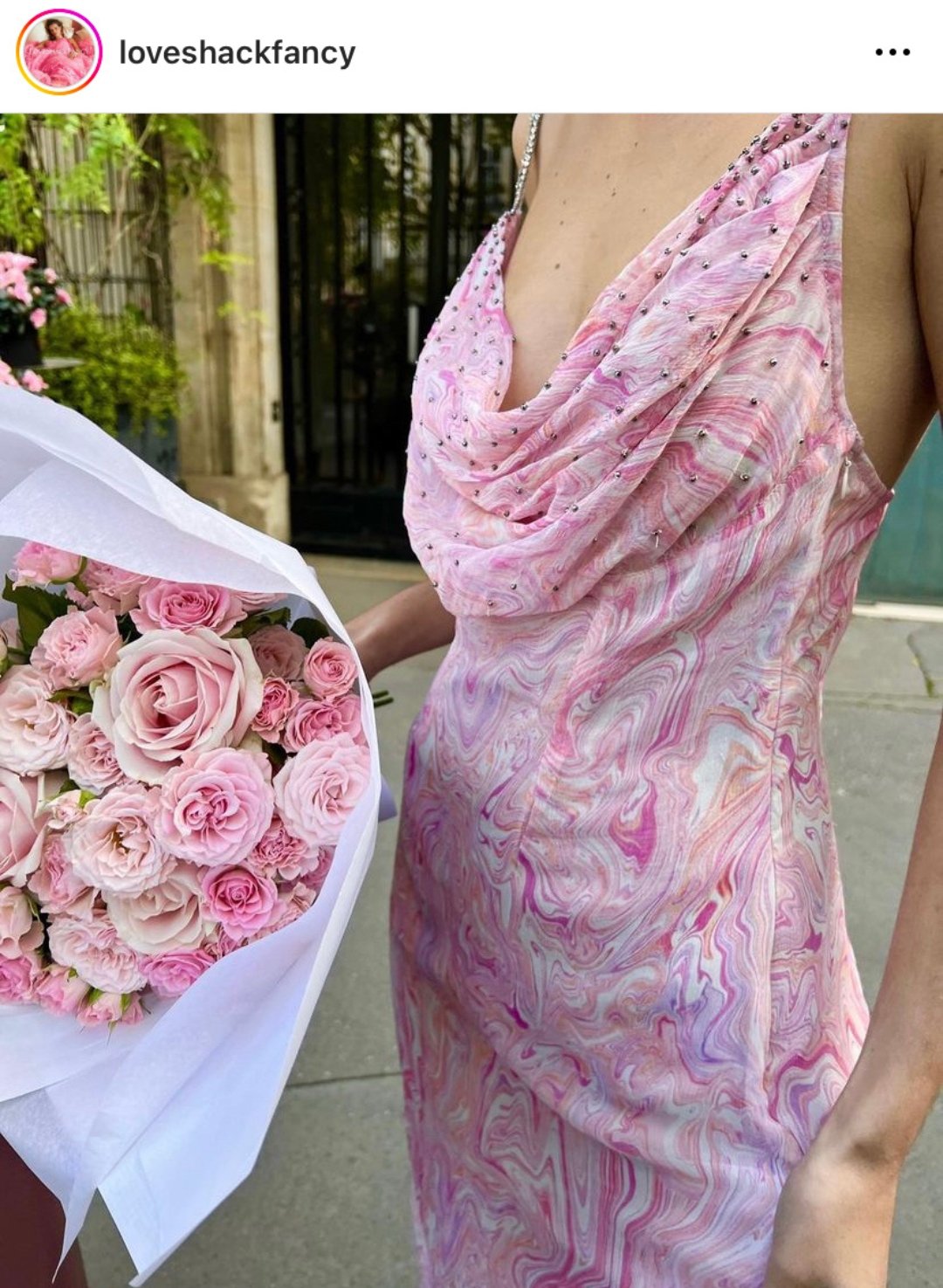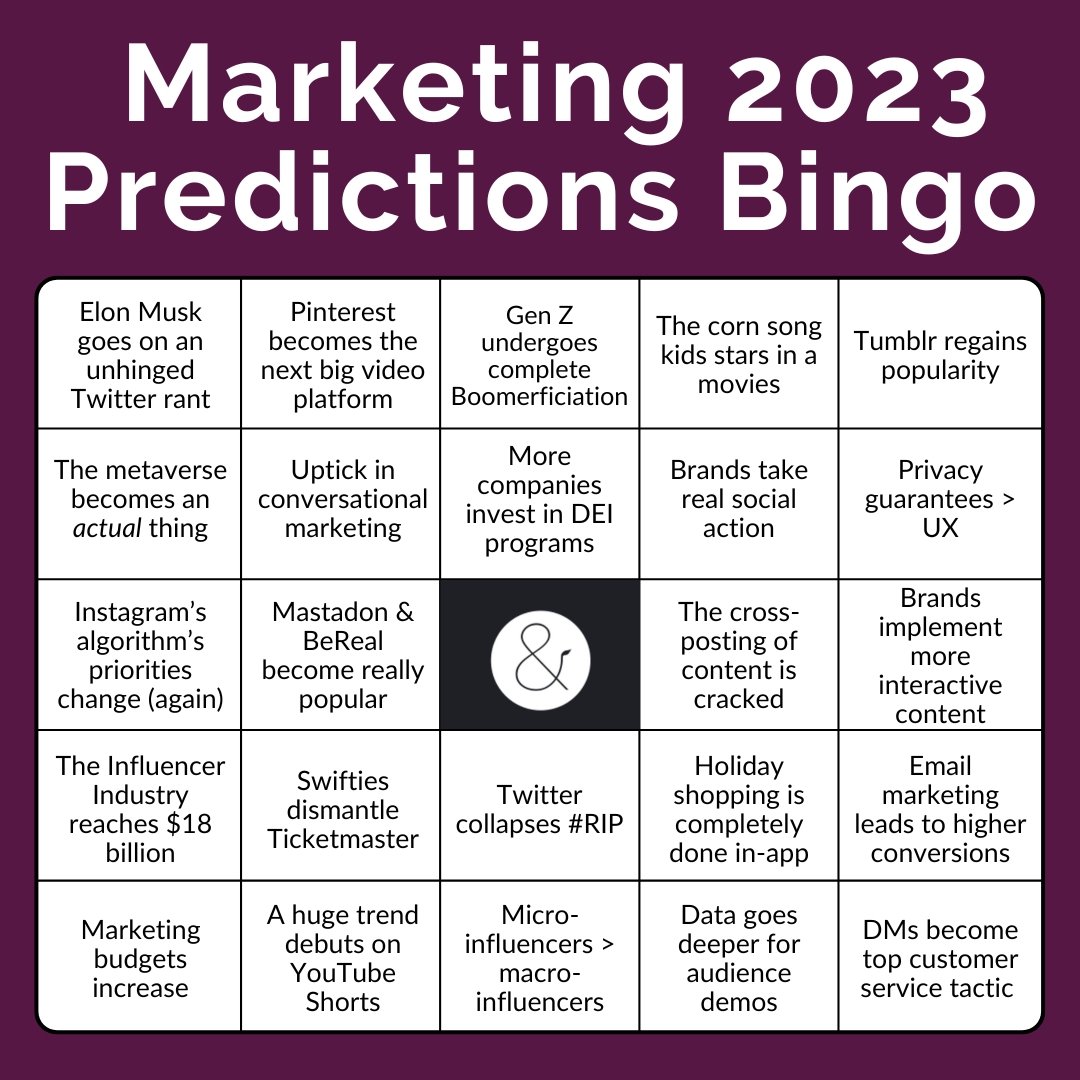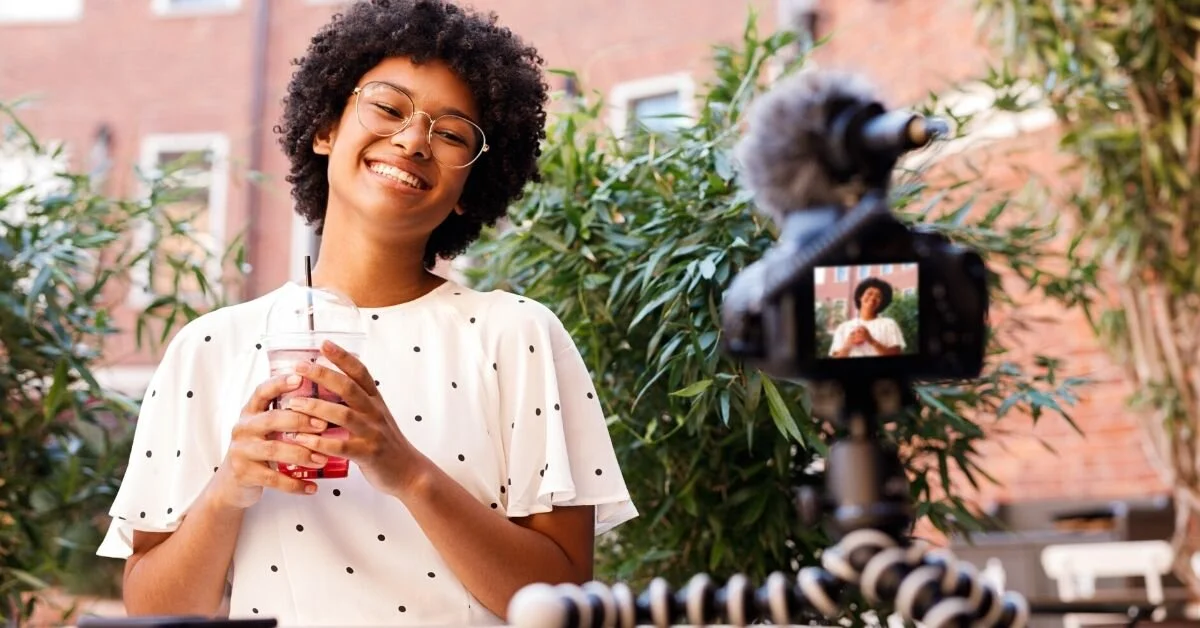8 Marketing Trends You Need to Know in 2023
11 MIN READ
With a recession in the works, newly elected officials heading into office, and Taylor Swift’s Eras tour, 2023 is shaping up to be quite the year. All of this change happening seemingly so quickly can be a lot to take in, especially when trying to unravel what it means for your brand.
As someone who has been described as “chronically online” more than once (which I’m choosing to take as a compliment, thank you very much), I’ve been paying close attention to the conversations taking place in digital circles—both as someone with a modicum of influence and a consumer—and I’m sharing the trends I’m anticipating being the major focuses of 2023.
To keep your brand relevant and scroll-stopping, take a look at both the tactical and values-based trends before you build out your marketing program for next year.
Tactical Trends
Short Form Video Is Here To Stay
As much as many of us try to fight it, short form video isn’t going anywhere. Celebrities made a valiant effort to change the direction of Instagram back to photos when Adam Mosseri, the head of Instagram, wouldn’t listen to the feedback of the common folks, but it seems their input only delayed the inevitable. Aside from seeing video prioritized on Instagram, you can also expect a continued importance placed on TikTok and the need to diversify onto YouTube Shorts.
Presently, TikTok is where most trends are born and discourse around these topics takes place among the 1 billion monthly active users. In fact, TikTok users watch 167 millions hours of video a minute. Similarly, YouTube Shorts receive 15 billion daily views and continue to grow in success. With YouTube handles rolling out, now is the time to reserve yours, so you can create exceptional short form video content across all channels.
While these types of short form video should already be familiar to you, the increased presence of BeReal and TikTok Now creates more challenges in this already robust library of short videos. As influencers begin to experiment more with these platforms and use them to chronicle the “real” aspects of their lives, it’s essential for brands to keep an eye on the messaging their influencers and the partners they’d like to work with are sharing on this platform. This is necessary not only to better understand your influencers, but also to stay on top of what conversations are happening across the different channels available to your fans.
Seamless Social Media Shopping
When it comes to social media, each platform’s objective is to keep you on the platform as long as possible…so they can make as much money as possible. With this in mind, most social media channels are prioritizing shopping on the platform, so you can find items you love, add to cart, and check out without ever leaving the platform. Even TikTok is launching its first in-app shops in the US ahead of the holiday shopping season.
If your lifestyle brand has goods to sell, now is the time to set up or optimize your shop on your social media platforms. While each social media platform has their own best practices, you generally want to make sure you have a keyword-friendly product title and description with multiple, high quality images showcasing your product.
After your store is set up, you’ll want to keep an eye on who is tagging your products in their posts, not only from a sales perspective, but also as an opportunity to build out your influencer list or even a brand ambassador program.
Micro-influencers > Macro-influencers
The influencer industry is set to reach $16.4 billion by the end of 2022. Year after year, marketing dollars continue to pour into influencer marketing with the industry growing from $9.7 billion to $13.8 billion in 2021 alone. Despite what naysayers and doomsdayers like to say, influencer marketing isn’t going anywhere anytime soon—but how it looks will start to drastically change.
For the past several years, many brands have been hyper-fixated on activating celebrity and mega influencers to sell their products or bring awareness to their brand. Unfortunately for brands with this mindset, trust in these all-star influencers continues to dwindle, leading to a drop in engagement rate and ultimately conversions. In contrast, nano and micro influencers (people with followers between 1,000 to 50,000) are beginning to rise to the top as the ideal brand partner.
Not only do these influencers have significantly higher engagement rates, ranging between 4-18% higher depending on the social media platform, they also have a much more engaged community. Nano and micro influencers dedicate personal time and attention to their followers—rarely leaving comments unanswered or DMs unread. With these personal connections, followers are able to trust the influencer and subsequently trust their product recommendations or endorsements for their brand partners.
While there is still benefit to working with macro and mega influencers, brands should be focusing their influencer budget for 2023 to building out a stable of nano and micro influencers who will have the kind of ROI that’s essential for all businesses in this economy.
Influencer Identification
Even without putting follower size into the equation, finding the right influencers for your brand can be tricky. Influencer discovery tools and Google searches can only get you so far. As we move toward influencer marketing that focuses more on nano and micro influencers, a better way of finding the right influencers for your brand is here…and it’s surprisingly simple.
In short, it’s time to dig into your photo tags on your preferred social media platforms. Take Instagram for example: Go through the accounts that have been tagging you in their photos and see what posts are catching your eye. Click through the posts and see how the influencers are talking about your brand. Did they specifically mention wanting to work together? Do they talk about your brand in a way that’s exciting and aligned with your brand messaging? If so, you’ve likely found a great candidate for your next influencer campaign.
Finding new influencers is as easy as checking your tagged photos
This method is not only superior because it essentially makes the influencers come to you—it also assures you that this influencer knows how to accurately represent your brand and convey your values. You’re able to remove some of the guesswork out of whether this influencer will be able to deliver content that aligns with your brand standards and likely cut down on the necessity for several rounds of edits.
Content creators also have an opportunity here. Those looking to be noticed by brands can quickly capture their attention by creating their own version of branded content to show the business what they’re capable of creating. By promoting the products and companies they’re already passionate about, they can increase the likelihood of being noticed by that brand as a potential partner.
Values-based Trends
Gen Z Under Further Scrutiny
As Gen Z grows older and becomes a part of the workforce (and therefore has their own money to spend), this generation is being further examined for the perceptions of their attitudes and outlooks on the world. Gen Z is praised by many as the generation that will save us—they’re fearless, political, and actively taking stands against oppression. With voices like Greta Thunberg, Malala Yousafzai, and Amanda Gorman as prime examples of their generation, you can’t help but admire the global changes these young adults are already making.
However, recent discussion has moved away from their potential for changemaking and instead toward the traits Gen Z shares with an unexpected generation: Baby Boomers. In what is being called the “boomerfication of Gen Z,” influencers and content creators are discussing Gen Z’s obsession with labeling things as “cringe” or “cheugy” that are usually specifically related to millennial culture. A recurring theme of Gen Z “coming for” Millennial stereotypes, such as the “millennial pause” or use of the word “doggo,” that many Millennial creators are finding to be similar to the treatment they receive from bloomers.
Exhausting quotations aside, with generational divides becoming more pronounced among certain groups, it’s imperative that brands pay attention to the conversations that are happening both across the generations in support and in ways that generational conflict might be occurring that may previously have been misunderstood.
While generational battle is nothing new and “cheugy” and “cringe” will likely go the way of terms like “basic” and “ratchet,” it’s important for brands to keep a finger on the pulse to know how generations are speaking to each other—and how your brand should be speaking to them.
Persona vs. Community
Historically, best practices in marketing have brands building out specific audience personas to target their products or services. An outdoorsy company may gear their products towards fit people in their 20s-30s who spend their weekends hiking with their dog on the closest mountain trail. This creates a distinct mental image and is a good starting point, but is missing one key component that is essential in modern marketing: inclusivity.
People of all shapes and sizes go hiking and being outdoorsy does not stop after you hit 40. There also happen to be a lot of adventure cats who have their own Instagram accounts who love a good trek up a mountain. A persona can leave out the community members who may be more affluent and more willing to invest in your products or services.
A prime example of a brand that has focused heavily on one specific brand image, potentially to their detriment, is LoveShackFancy. Their branding comprises mostly of willowy, white women in highly stylized, magazine-ready photos. They’ve limited their clothing line to only straight sizes and continue to cultivate a 2006 Marie Antoinettte aesthetic. The brand remains admired for its confectionary beauty and celebration of femininity, but as it holds onto this one-dimensional target persona, it has the chance to lose its audience to brands like Selkie.
Selkie is similar in price point and design to LoveShackFancy. They’re known for their puffy, princess gowns and romantic florals. And while LoveShackFancy shows one specific face as their ideal audience, Selkie celebrates all women of all ethnicities, body types, and more. Their dress sizing goes up to a 6X and this is reflected in the people they show on their social media platforms. Their audience perception has moved past one individual persona and toward a community of people from across different backgrounds with the shared interest of looking like a character from a fairytale. This sense of community in their audience has led to a viral presence on TikTok and Instagram that transcends niches and is changing the fashion industry.
While personas certainly still have their place in audience building, it’s essential for brands to start planning outside of one identity and consider the potential consumers of their brand. This could look like increasing your clothing size range, including more BIPOC models in your ad campaigns, or choosing to partner with a new influencer who thoughtfully engages with your brand in an unconventional way.
Social Justice Fatigue & Brand Action
Following the Black Lives Matter protests in response to George Floyd’s murder, Americans and people across the globe turned their attention toward social justice issues. All over, people began to invest more time and energy into diversity, equity, and inclusion. More and more brands began to speak up in support of these important issues, but unfortunately, that’s where the action stopped for many of them.
Two years later, people are starting to lose interest in social issues and equality, according to a GWI trends study. The emotional labor put forth by the individual is being replaced by fatigue. Given that living in the modern-day United States can bring a new unprecedented trauma, both globally and in our local communities, on a daily basis, it’s understandable that people may feel fatigued, particularly when they’re not receiving the support they’ve asked for (and are promised) from businesses with the means of creating change. Consumers have heard the messaging of “we need to do better” from brands on a loop and are now demanding that action be taken.
In 2020, “be socially responsible” was the top concern for a brand’s audience. However, now we see that focus shift to the third top priority and instead “listen to feedback” takes the number one spot, according to GWI. While social responsibility is still the third top priority, we’re seeing a spotlight on brands and what individuals expect from them as the call for change has gone largely unmet.
The feedback that brands continuously receive (but often ignore) is to take action, which is in alignment with being socially responsible. What should these significant actions look like? Here’s a look at previous performative social justice behaviors brand employed and how they should be translated into action.
OLD: Social media post sharing concerns over latest social injustice and offering resources to followers on how to safely protest.
NEW: A sizable donation made to charities or organizations that can support this social injustice. News about this donation, as well as additional resources and how to donate, can then be shared on social media.
WHY: While providing protesting information is helpful, it puts the onus back on the individual to take action against injustice. By making a donation, brands are showing that they are actively supporting ways to combat these issues.
Shifting Away from Trend Culture
Now, you might ask yourself why someone writing about trends would assert that we’re trending away from trend culture…but hear me out. Our concepts of trends have changed dramatically over the last three years with the rise of TikTok and our deeper reliance on social media for community during the pandemic. With one TikTok video, an entire trend cycle can start and end within a few weeks time. Think the Corn Kid song or a near instantaneously sell out of a beauty product that’s a dupe for a luxury item.
Trends are moving faster than ever before, making them somewhat meaningless for long-term marketing. The most important trend is essentially to be aware of what is trending in the exact moment.
Similarly, younger generations are unwilling to listen to trend forecasters who decide toxic trends are back in vogue. For example, The New York Post recently reported that “heroin chic” was back in style—only to be met with backlash from celebrities and influencers of all sizes who refused to allow tabloid headlines to cultivate unhealthy body image ideals. The voices speaking out against the headline are those who have played an integral role in celebrating body positivity and body neutrality.
Trends are no longer in the hands of the media. They belong to the creators and makers who are brave enough to try new things and inspire their followers. Opinions that were once easily swayed by the media have now done the work to make choices for themselves and are choosing community over headline nonsense.
With these challenges and opportunities on the horizon for 2023, now is the time to polish your marketing game plan for the new year. Creating a timely yet lean marketing program is essential for a recession year, and our team at Branch & Bramble can help. If you have any questions about these trends or our services, feel free to reach out on our Contact page.
2023 Trend Bingo Card
Looking for more trend predictions? Make sure you download a copy of our Marketing Trends 2023 Bingo Card, so you can play along and see which of our 24 marketing predictions come true in 2023!
















